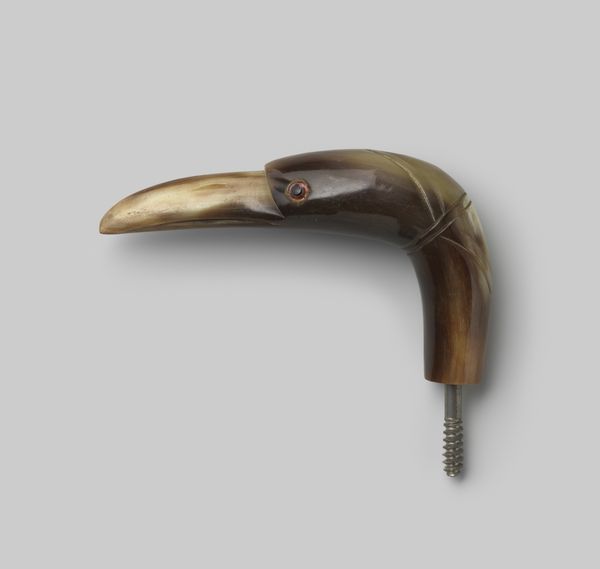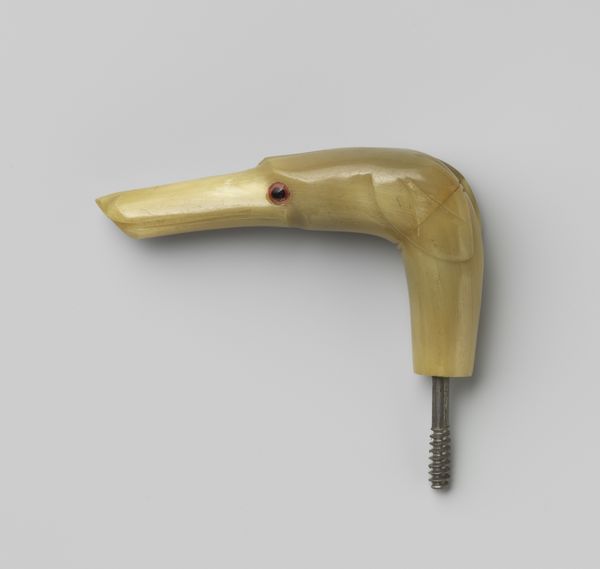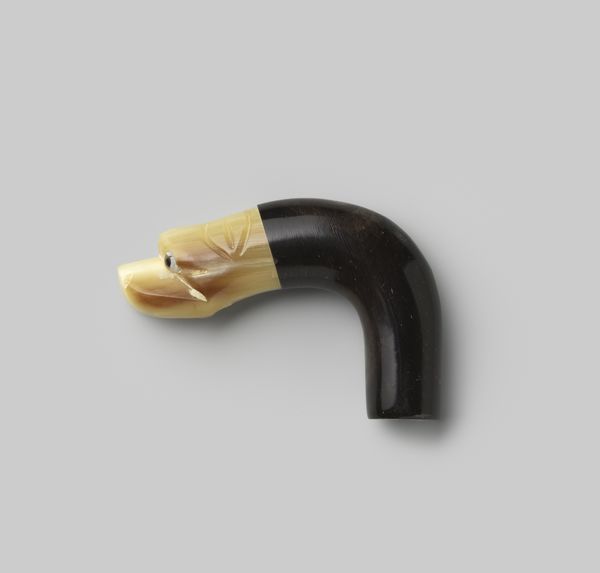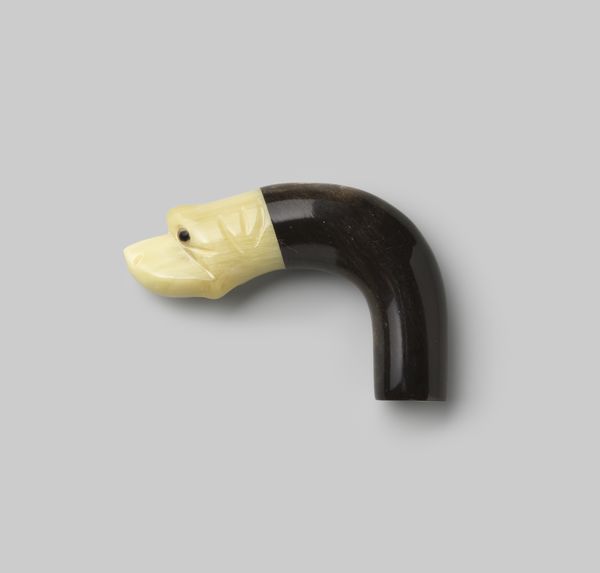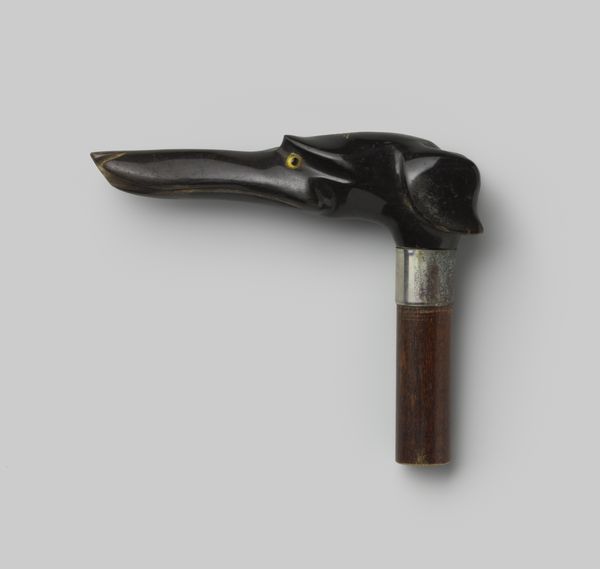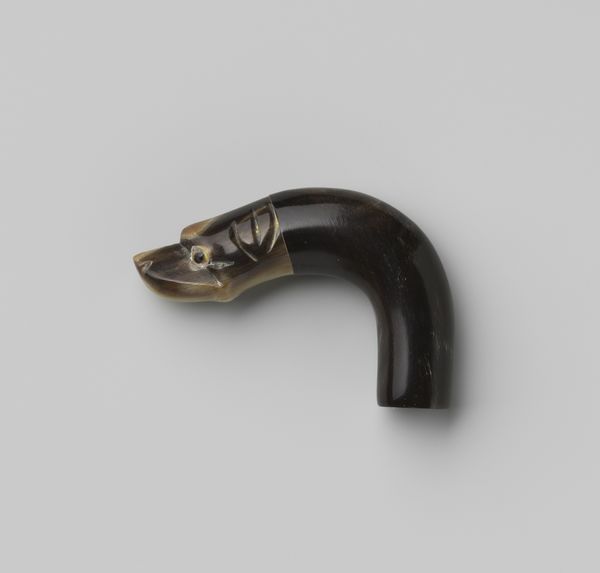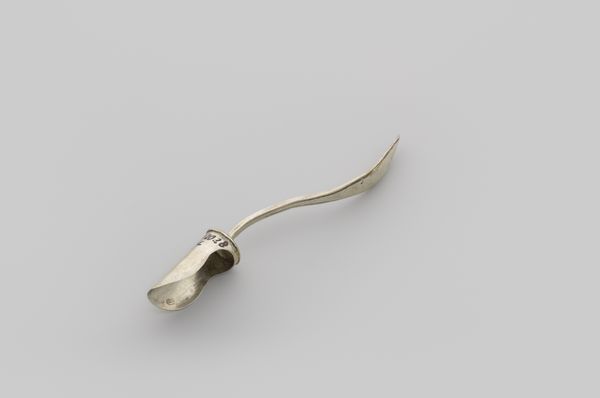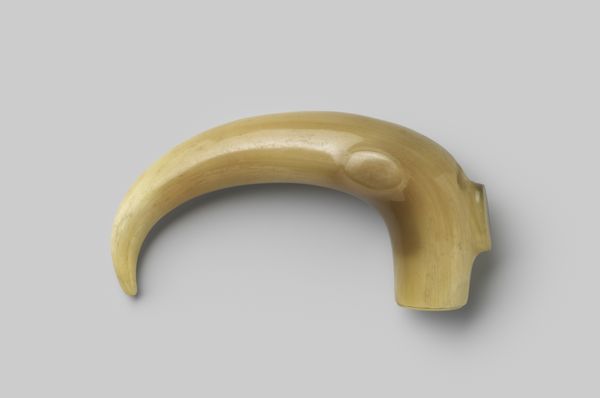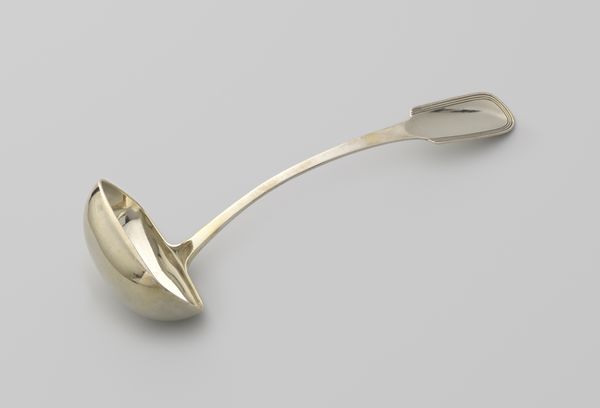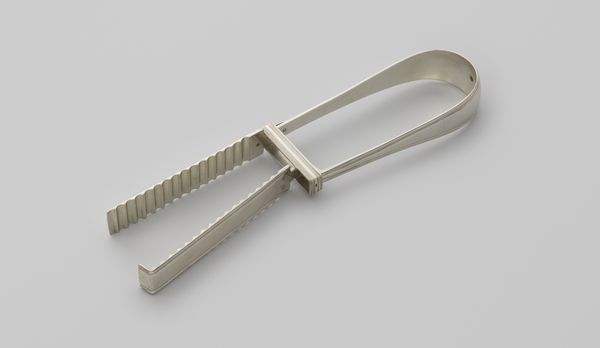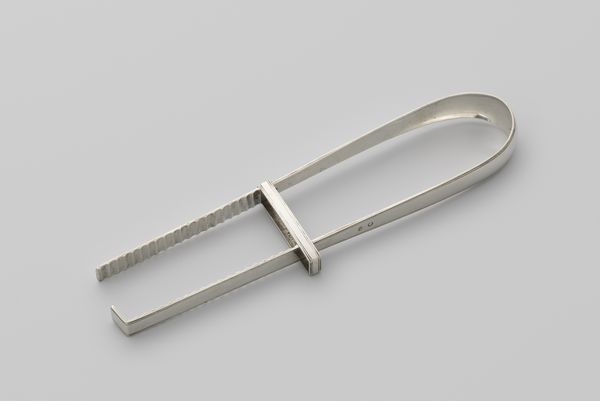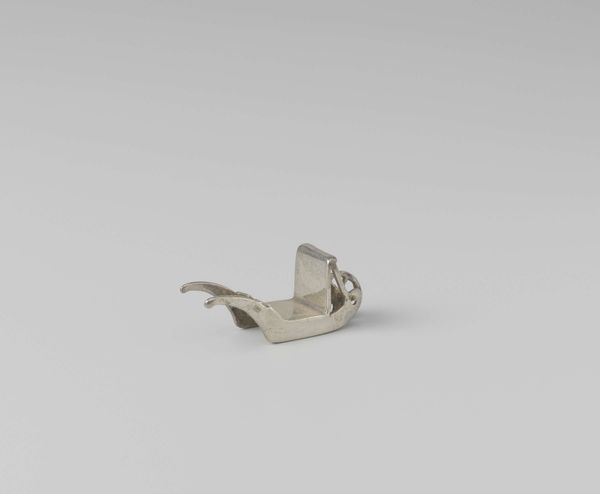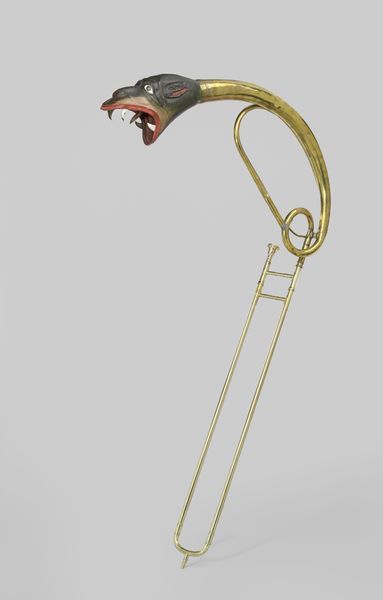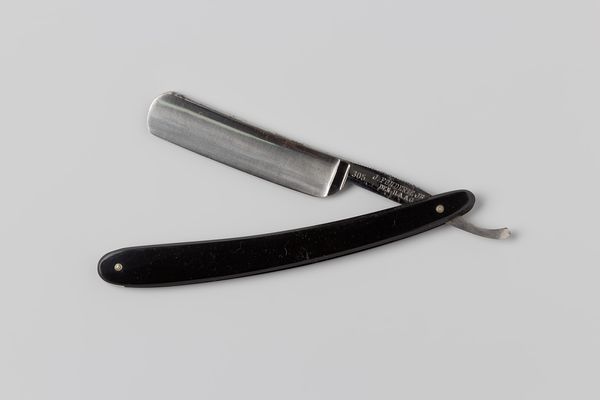
Knop van beige hoorn in de vorm van een vogelkop met iets geronde, spitse snavel c. 1900 - 1930
0:00
0:00
carving, wood
#
carving
#
figuration
#
wood
#
decorative-art
Dimensions: length 9.5 cm, width 10.5 cm, height 2.7 cm
Copyright: Rijks Museum: Open Domain
Curator: Let’s turn our attention to this intriguing object – a beige horn knob carved into the shape of a bird's head, dating from around 1900 to 1930. It is attributed to Gelria, though, the artisan remains unidentified. Editor: It's strange and compelling, isn't it? It has a somewhat whimsical air, and it really makes me wonder what it topped. It almost feels like it should adorn something like a Victorian walking stick. Curator: I would suggest that that seems entirely likely given the screw-threaded dowel at its base! What's interesting to me is the medium of choice. The horn—a material, usually derived from animal origins, signifies much more than mere ornamentation here. Editor: Absolutely. Using horn like this isn’t just about aesthetics, is it? There’s a social element to consider too. What sort of skills would you need, the tools? This carving hints at broader systems of knowledge and practices linked to the making of decorative objects. And who could afford such items? Curator: A keen observation. Consider the decorative arts context of its time - early 20th century - horn carvings like this represented both an appreciation for natural materials and, often, a nod towards the exotic. They symbolized power, taste, even imperial interests in wildlife and ornithology, particularly through these figurative forms. The stylized approach, that little dash that acts as the bird's nostril. It elevates function to art. Editor: You know, tracing the actual source and trade of this horn—maybe even finding invoices or records of its carving and sale—that’s where we might glimpse who held real power at the time. Not just the consumer, but those who processed it. Where the raw stuff meets industry. I bet this bird could reveal much! Curator: Indeed. Even those tiny details matter. It certainly inspires much wonderment – making you contemplate what sort of individual clutched onto this unique piece. Editor: Precisely. Art history sometimes ignores the nitty-gritty details in favor of grand statements, but there is a complex reality of artistry here, in material culture. It's there, beneath the polished surface.
Comments
No comments
Be the first to comment and join the conversation on the ultimate creative platform.
